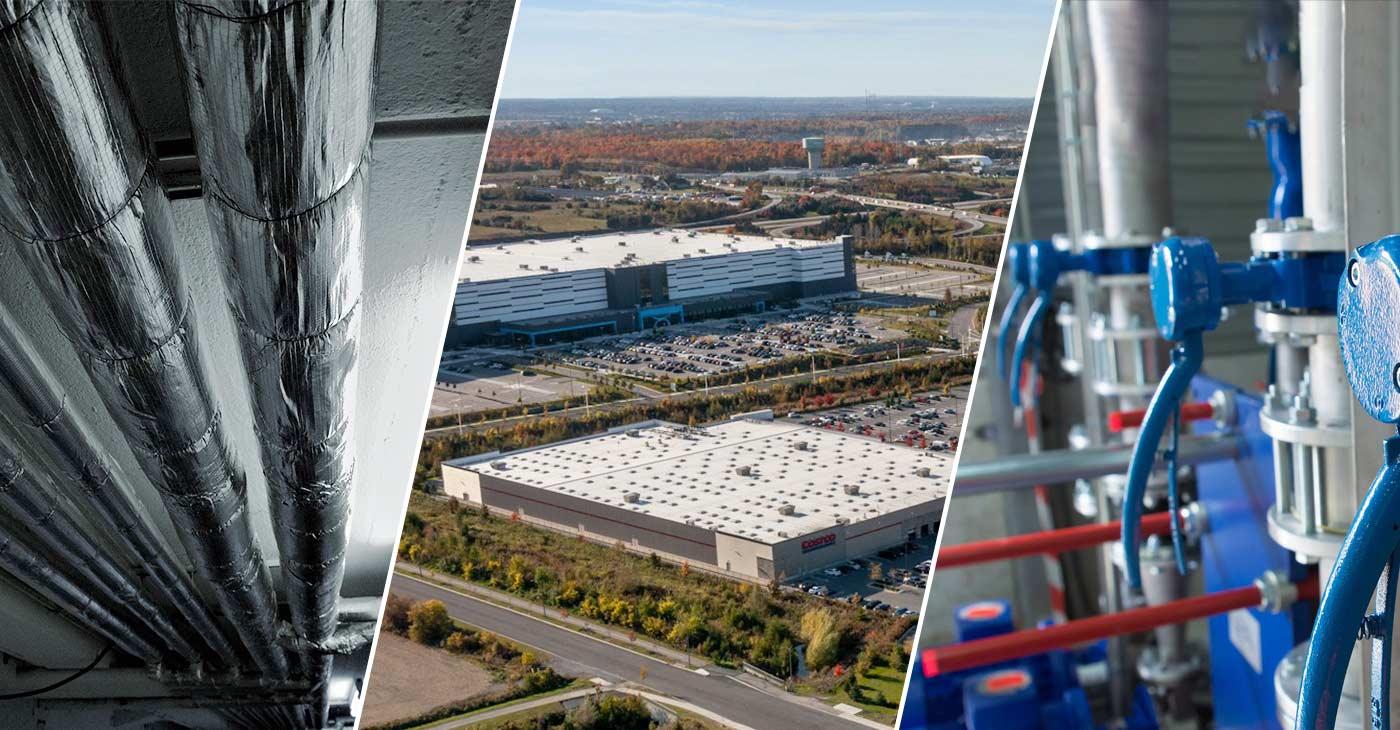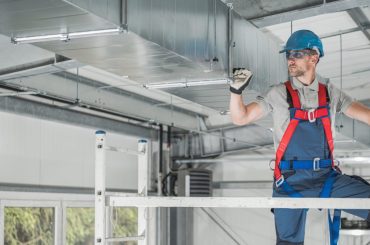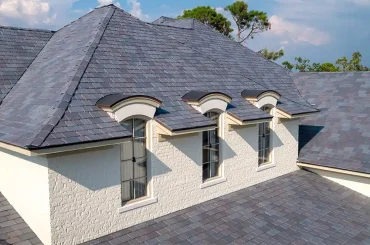Table of Contents
What is industrial HVAC, in the domain of modern establishments and business foundations? and how it is regulated are key fundamental questions needed to have a thorough insight. HVAC systems help in keeping an agreeable and controlled indoor climate because of multiple factors, including laborer efficiency, item quality, and administrative consistency.
This is where Industrial Heating, Ventilation, and Air Conditioning (HVAC) system frameworks become an integral factor. In this article, we will dig into what modern HVAC involves, how business frameworks work, and their significance in assorted areas.
So, what is industrial HVAC?
Industrial HVAC refers to the specialized heating, ventilation, and air conditioning system frameworks intended to meet the extraordinary necessities of huge-scope modern and business offices.
Not at all like private central air frameworks, which are principally centered around individual homes or little structures, modern central air frameworks are designed to deal with the requesting conditions present in manufacturing plants, stockrooms, server farms, shopping centers, office buildings, and other huge business spaces.
Components and Equipment in Industrial HVAC Applications
These systems assume a diverse part, incorporating several key capabilities:
Temperature control in industrial spaces
Modern central HVAC frameworks are entrusted with directing indoor temperatures to guarantee ideal working circumstances for representatives and keep up with ideal ecological circumstances for delicate equipment and cycles.
Ventilation
Satisfactory ventilation is fundamental in modern settings to eliminate airborne impurities, control moistness levels, and recharge indoor air with new, oxygen-rich air. Appropriate ventilation additionally mitigates the development of risky gasses and toxins.
Industrial air quality management
Keeping up with high indoor air quality (IAQ) is urgent for advancing a solid and safe workplace. Modern air conditioning frameworks consolidate filtration frameworks, air purifiers, and different advances to eliminate particulate matter, allergens, poisons, and other airborne pollutants.
Humidity control
Controlling humidity levels is basic in modern conditions where an abundance of dampness can prompt erosion, form development, and other adverse consequences for hardware, materials, and tenant wellbeing. These are the essential requirements of what is industrial HVAC.
Energy efficiency
Modern central air frameworks are intended to enhance energy use and limit functional costs through the coordination of energy-proficient parts, high-level controls, and sustainable design practices.
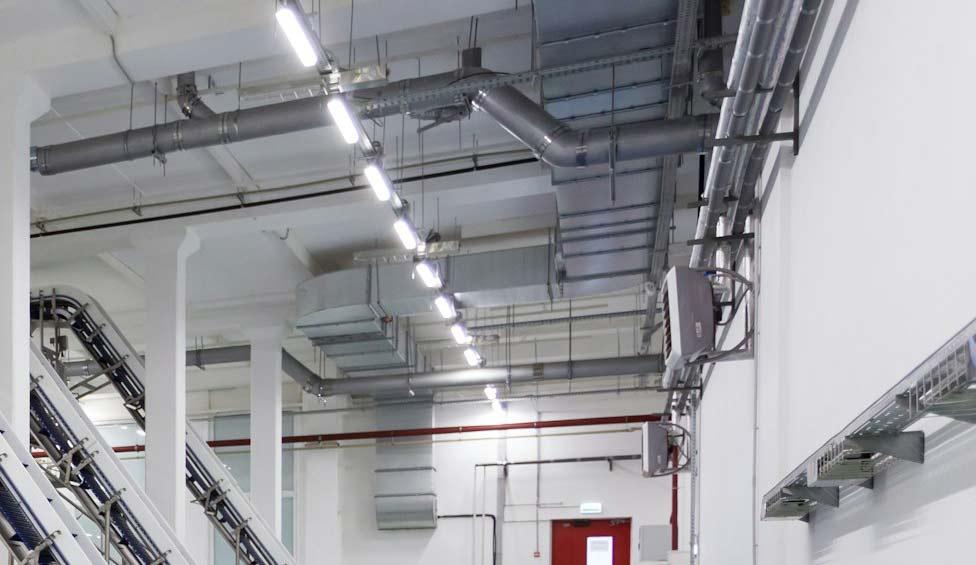
Industrial Ductwork Design
Industrial ductwork design is a critical part of the HVAC framework anticipating large-scale industrial facilities. Ventilation work fills in as the conduit for conveying warmed or cooled air, as well as eliminating exhaust and keeping up with ventilation all through the structure.
The plan of modern ventilation work includes cautious thought of a few vital variables to guarantee ideal execution, effectiveness, and safety. One of the essential contemplations in industrial ductwork design is the wind stream prerequisites of the office.
Engineers should compute the important wind stream rates to meet the warming, cooling, and ventilation needs of different zones inside the structure. Factors, for example, building size, inhabitants levels, equipment heat loads, and air quality standards are considered during this cycle.
One more basic part of industrial ductwork design is the choice of duct materials and sizing. Ventilation work materials should be able to endure the requests of modern conditions, including temperature vacillations, dampness exposure, and mechanical burdens.
Normal materials utilized in modern ventilation work incorporate galvanized steel, stainless steel, aluminum, and fiberglass-reinforced plastic (FRP). The measuring of pipes is resolved because of wind stream prerequisites, pressure drop computations, and space limitations inside the structure.
Proper duct layout and setup are fundamental to guarantee effective wind stream conveyance and limit energy misfortunes. Engineers plan conduit frameworks with smoothed-out pathways to lessen air opposition and tension drop.
They likewise consolidate elements like dampers, diffusers, and registers to control wind streams and direct conditioned air to specific areas as needed.
What is industrial HVAC? is a modern ventilation work configuration intended to keep people safe, and follow guidelines and industry principles. Engineers guarantee that channel frameworks are intended to prevent air spills, limit fire risks, and work with upkeep and review exercises.
Overall, effective industrial ductwork design assumes a basic part in the presentation, proficiency, and safety of HVAC frameworks in modern offices
How Do Commercial HVAC Systems Work?
Commercial HVAC systems utilize a mix of heating, ventilation, and air conditioning components to make and keep an agreeable and controlled indoor climate inside commercial structures. These frameworks are regularly bigger in scale and more complicated than their residential partners, owing to the expansive nature of business offices and the assorted prerequisites of different areas.
The critical parts and functional standards of commercial HVAC frameworks include:
Industrial heating systems
Commercial heating systems use different sources of heat, including natural gas, power, oil, or sustainable power sources like sunlight-based or geothermal energy. Common heating equipment incorporates heaters, boilers, heat siphons, and brilliant warming frameworks.
Ventilation systems for manufacturing facilities
Ventilation assumes a vital part in key functions of what is industrial HVAC? as it ensures the persistent progression of natural air into the structure while depleting flat air and toxins. Ventilation hardware incorporates fans, air channels, dampers, and air handling units (AHUs). Depending on the building’s design and inhabitants, ventilation might be accomplished through normal ventilation, mechanical ventilation, or a blend of both.
Air conditioning for industrial environments
Business HVAC frameworks are answerable for cooling indoor spaces during hot weather patterns. These frameworks commonly utilize refrigeration cycles to extricate heat from indoor air and scatter it outside, bringing about a cooler and more agreeable indoor climate. Cooling gear incorporates chillers, cooling towers, air controllers, and ductwork.
HVAC automation in industrial settings
Current business HVAC frameworks are furnished with cutting-edge control frameworks and robotization advancements to direct temperature, dampness, wind stream, and different boundaries with accuracy and productivity. Building automation systems (BAS) permit office supervisors to screen and change central air tasks from a distance, streamline energy utilization, and investigate issues continuously.
Energy-efficient industrial HVAC
Energy effectiveness is an essential concern in commercial HVAC frameworks because of the huge energy utilization related to warming, cooling, and ventilation processes. Energy management strategies, for example, demand-based control, variable speed drives, energy recovery systems, and warm drafting, assist with limiting energy waste and reduce operating costs.
Industrial HVAC maintenance service
What is industrial HVAC? requires regular maintenance and servicing to guarantee solid and effective activity. Planned investigations, cleaning, channel substitutions, and adjustment of gear assist with preventing breakdowns, expanding the life expectancy of central air parts, and keeping up with indoor air quality guidelines.
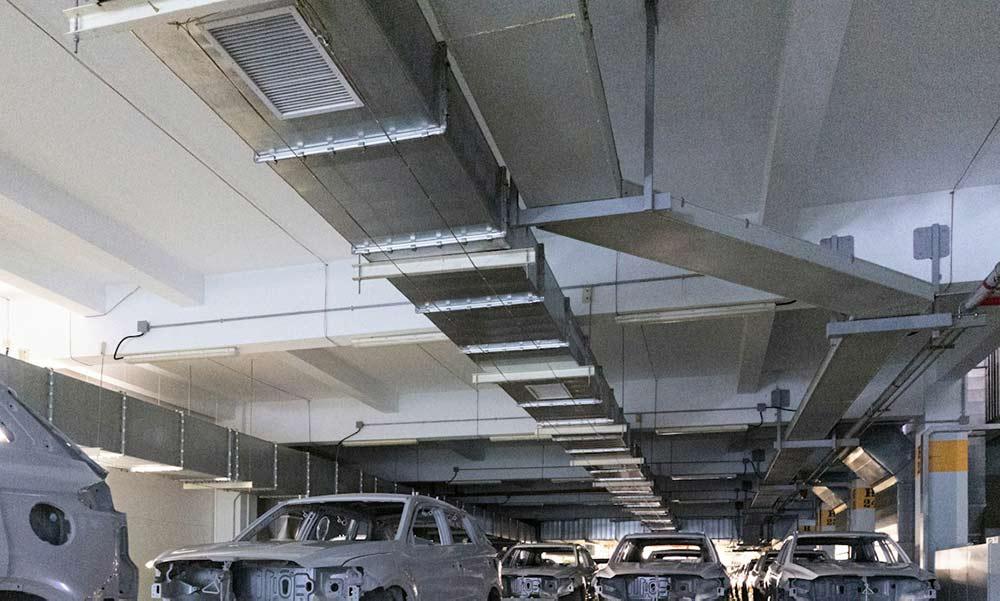
Commercial HVAC Solutions for Large-Scale Facilities
HVAC solutions for factories are customized to address the unique difficulties and necessities of industrial conditions. These arrangements center around making ideal indoor circumstances to guarantee laborer solace, safeguard delicate gear, and keep up with item quality.
Key parts of HVAC frameworks for industries incorporate ventilation frameworks to eliminate airborne impurities and keep up with air quality, alongside warming and cooling equipment to control temperatures all through the office. Also, specific filtration frameworks are frequently incorporated to catch particulates and contaminations produced by modern cycles.
Humidity control is one more basic part of HVAC solutions for industrial facilities, as excess moisture can prompt erosion, shape development, and harm to materials and hardware. By keeping up with legitimate moistness levels, these frameworks assist with safeguarding the respectability of equipment while limiting the risk of free time because of support or repairs.
What is industrial HVAC? Large-scale facilities are complex and customized frameworks that function to satisfy the particular needs of expensive structures like places of business, shopping centers, emergency clinics, and air terminals.
These frameworks incorporate warming, ventilation, and cooling parts to give agreeable indoor conditions while guaranteeing energy effectiveness and quality. With broad ventilation work, high-level controls, and high-limit hardware, industrial HVAC frameworks keep up with exact temperature and humidity levels across different zones.
Generally, HVAC solutions for factories assume an imperative part in ensuring the smooth and effective activity of modern offices, upgrading laborer efficiency, drawing out hardware life expectancy, and eventually adding to the progress of manufacturing operations.
Though, the concept of industrial HVAC extends beyond mere temperature regulation, encompassing a broad range of applications tailored to meet the specific needs of various industries.
In the context of manufacturing, for example, HVAC systems are essential for maintaining the precise conditions necessary for production processes. In industries such as pharmaceuticals or food processing, where cleanliness and temperature control are paramount, HVAC systems ensure that environmental conditions meet strict regulatory standards, thus safeguarding product integrity and safety.
Similarly, in the technology sector, particularly in semiconductor manufacturing or data centers, industrial HVAC systems manage minute particles and control humidity to prevent equipment malfunction and data corruption.
The precision and reliability of these systems are critical as they directly impact the quality and performance of electronic components and the reliability of data storage and processing.
In the automotive industry, paint shops require highly controlled environments to ensure the quality and durability of vehicle coatings. Here, industrial HVAC systems regulate air flow, temperature, and humidity to create the optimal conditions for paint application and curing, directly affecting the finish and longevity of the vehicle exteriors.
Moreover, in sectors such as agriculture or textiles, where products are highly sensitive to environmental conditions, HVAC systems can drastically impact product quality and yield. By controlling the indoor climate, these systems help in maintaining the optimal conditions for crop growth in greenhouses or ensuring the proper humidity levels for textile processing.
Emergency equipment
In large-scale facilities, integrating emergency safety features like safety showers and eye-wash stations (often referred to collectively as “emergency showers”) into the HVAC system is an important consideration. These features are crucial for the safety of workers, particularly in environments where they may be exposed to hazardous materials.
Emergency showers and eyewash stations need to be in areas where they are easily accessible in case of an accident. This requires careful planning within the design of the HVAC system to ensure that these safety features are not only accessible but also that the environment around them is maintained at a safe and comfortable temperature.
This is because in the event of a chemical exposure, affected individuals may need to use these facilities for an extended period, potentially up to 15 minutes or more. Read more about this at hatasuihkut.com.
The integration of these safety features into the HVAC system involves several key considerations:
- Temperature regulation: The water used in emergency showers and eye-wash stations must be within a safe temperature range. Too cold, and it could cause hypothermia, especially if the person needs to be under the shower for an extended period. Too hot, and it could exacerbate chemical burns or cause other injuries. The HVAC system needs to help maintain an ambient temperature that ensures water temperature remains within the safe range.
- Accessibility and space planning: The placement of emergency showers and eye-wash stations should be considered in relation to HVAC vents, ducts, and other components. They need to be easily accessible, which means HVAC components should not obstruct access paths, and the climate control needs to extend adequately to these areas to ensure they are not too hot, cold, or humid.Air quality: In areas where hazardous chemicals are used, the HVAC system must ensure that air quality is maintained to avoid contamination of clean areas, especially around the emergency showers and eye-wash stations. This might include enhanced filtration systems or localized exhaust systems to remove airborne contaminants quickly.
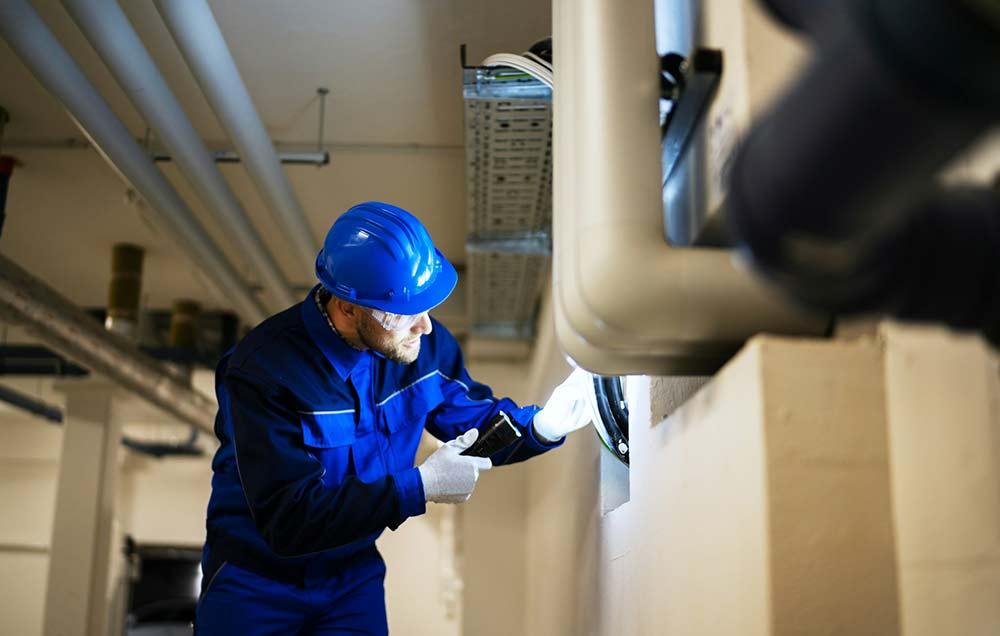
Importance of Industrial HVAC in Commercial Operations
Industrial HVAC systems assume an essential part in the achievement and efficiency of business tasks across different areas. It gives an agreeable and solid indoor climate and improves worker fulfillment, efficiency, and confidence. Very much kept up with central air frameworks make ideal working circumstances, decreasing non-attendance and further developing by and large work execution.
Numerous modern cycles and gear require exact temperature and moisture control to work productively and dependably. Modern central air frameworks assist with keeping up with stable ecological circumstances, preventing equipment failures, material degradation, and production disruptions.
Industrial HVAC systems that business offices are dependent upon different guidelines and principles administering indoor air quality, ventilation rates, and ecological emanations. Modern central air frameworks guarantee consistency with administrative necessities, keeping away from fines, punishments, and lawful liabilities.
In retail foundations, hospitality venues, and business structures open to the general population, giving an agreeable and welcoming indoor climate is fundamental for drawing in and holding clients. Viable central HVAC frameworks add to positive client encounters and repeat business.
Data centers and server rooms house a basic IT foundation that creates huge intensity. Modern HVAC systems intended for cooling and environment control are fundamental for keeping up with ideal working circumstances and preventing equipment overheating and margin time.
Summary – What is Industrial HVAC?
In summary, industrial HVAC systems are vital for maintaining optimal indoor conditions in large-scale commercial operations. They are particularly essential in manufacturing plants to ensure product quality, in the automotive industry where they support critical processes such as paint application, in data centers to prevent equipment overheating, and in healthcare facilities to maintain clean air for patient health.
These systems also play a crucial role in retail and hospitality venues, educational institutions, and office buildings, enhancing comfort and productivity. By ensuring proper temperature, ventilation, and air quality, industrial HVAC systems contribute to worker satisfaction, product integrity, and regulatory compliance across various sectors.
By understanding the standards and elements of these frameworks, organizations can make better, more agreeable, and more useful indoor conditions while upgrading energy utilization and functional productivity.

